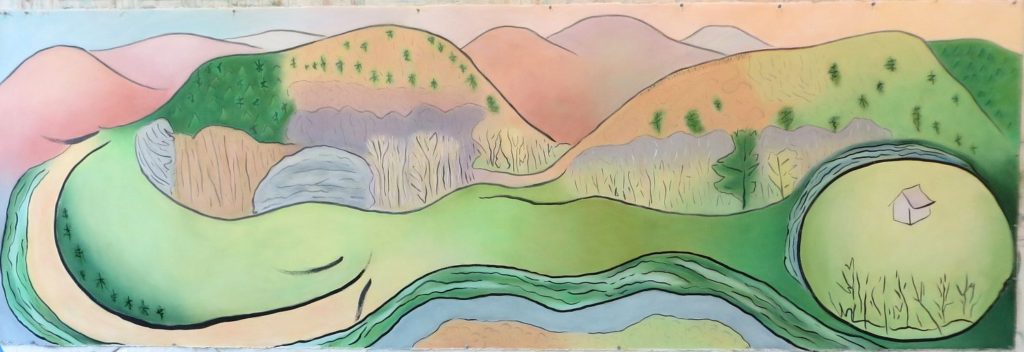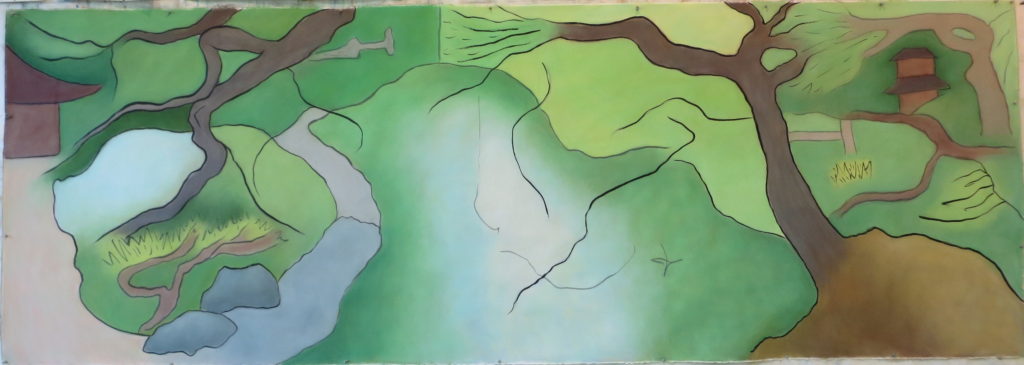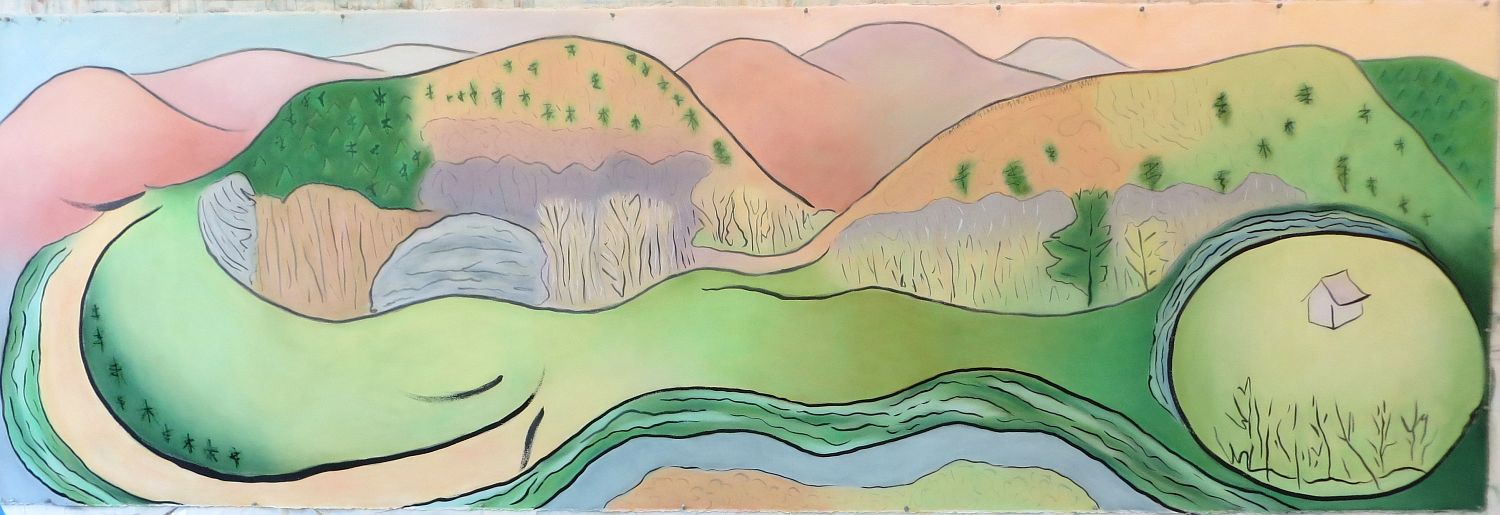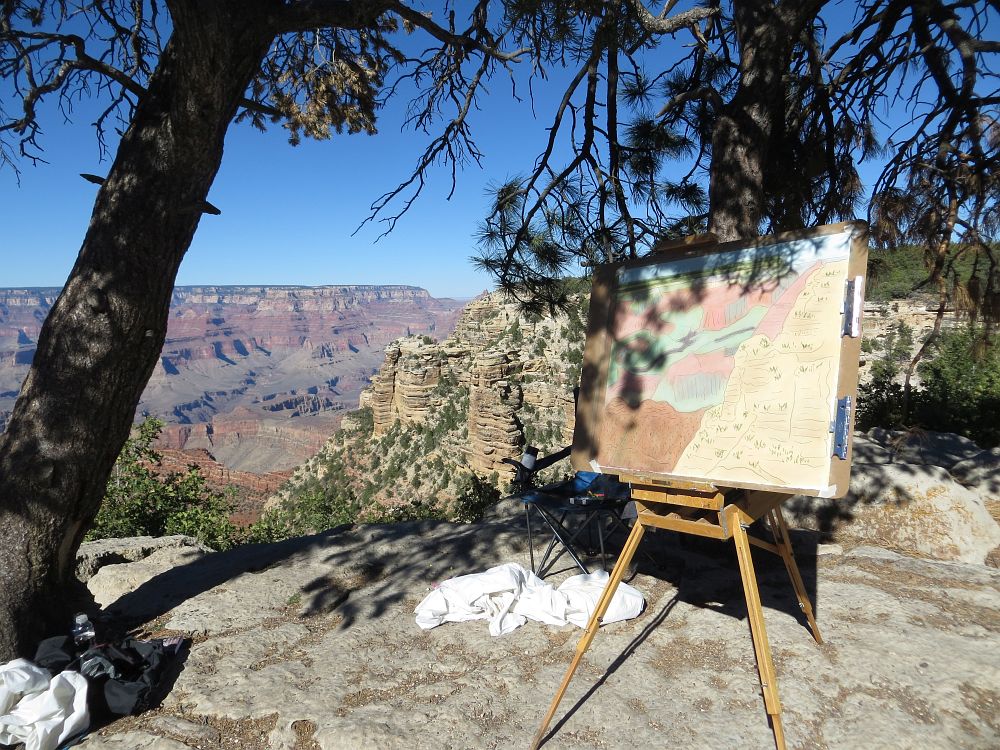Susan M. Wadsworth, Rindge NH and Shushan, NY
Art is often affected by current historical, political, and social events. I remember co-curating a show back in 2002 at the Fitchburg Art Museum (with then-curator Pam Russell) as to how the events of 9/11 had influenced artists’ work. Nowadays, it is interesting to see how the Covid-19 pandemic has influenced art and artists.
Some artists have acknowledged their fear, their trepidation in the studio, their reluctance to engage in art.
But others have discovered a new freedom of creation. I am one of the latter artists.
How has Covid affected my studio work? Well, in some ways, Covid morphed from my retirement, and for a while there wasn’t a lot of difference in our lives. We live in a rural NH town, and my husband does the shopping and cooking, so there wasn’t much reason for me to leave the house anyway.
For me, the Covid pandemic meant that I could continue my ideal retirement schedule: time for meditation, reading, and exercising, etc. before going into the studio each afternoon. To be honest, I am a very efficient worker, and two hours is often my limit on actually working on particular pieces for the day. Then I read art texts, draw out future ideas, or even nap in my chair in the late afternoon winter light. I have to say the unhurried life of retirement is the best. It is these “Covid” lessons of change that we need to retain when life opens up and becomes hectic again.
Thus I decided that “lockdowns” were the time to experiment and experiment broadly. I work on paper, torn carefully from large rolls so that the uneven edges add a lot to the physicality of the work. My rolls of Arches printmaking paper are 42” high by 10 yards wide. That means I could get about 3 10’ works out of one roll of paper.
So unroll that paper I did. I filled up one smaller wall with a 10’ piece, and the other wall was bigger and close to accommodating two slightly smaller works. There was a wonderful freedom to do huge curves in ink with huge Asian brushes on those open sheets of paper.
The first 11’ Magical Spring was a recapture of last spring’s forms, textures, buds, and flowers from April into May. Nowadays, at the same time of the year, I see the same fresh lines and reddish and yellow-greens that I recreated in that work. Magical Spring is based on the hills of southern Vermont, with the colors and light changing with spring and the winding of the Battenkill River.
The funny thing is, the whole work looks like it is oil on canvas, but it is really pastel on paper with ink outlines. The second large work, Japanese Garden, Silver Pavilion, Kyoto was 10’ wide. Japanese Garden, Silver Pavilion, Kyoto is an abstraction of a famous garden in Japan. In this one, people see different things. I see a branch, they see a trail….but all these ideas are echoed in the energy and forms, the depth of meaning and symbolism of a Japanese garden.
When the upstairs shows scheduled for February 2021 at the Jaffrey Civic Center fell through, I was happy to grab the second room, with the largest walls, to use for my two huge murals. Here I could spread out the rolled-out paper, with my husband’s help pinning them to the walls. It was wonderful to feel a flatness of surface, a merging of wall and image. To me, these pieces represented a freedom. I can’t frame them, as they would be far too cumbersome and expensive. But in a permanent place, they could be framed or installed into a wall. I feel they were the culmination of my Covid work.
Few people, unfortunately, saw the “Covid Creative” exhibition. I shared the space with Linda Greenwood’s metallic collages and huge photos of flowers by Elsa Voelcker. Like me, Linda had worked freely and actively, creating many new collages during the pandemic. Elsa’s work was a continuation of the work shown in her recent retrospective at Franklin Pierce University.
And now, as I sense that my artist (and non-artist) friends have gotten the vaccine and are ready to engage again with the world, I think the artistic flow is going to be immense. There will be works celebrating the end of the crisis, others examining the effect of the crisis then and now, and new media and styles may be explored. When artists reacted to the Black Death of the 14th century, they either became more strictly religious, or they exploded and celebrated life (and sin) fully. Perhaps similar approaches will be seen now in the arts.



